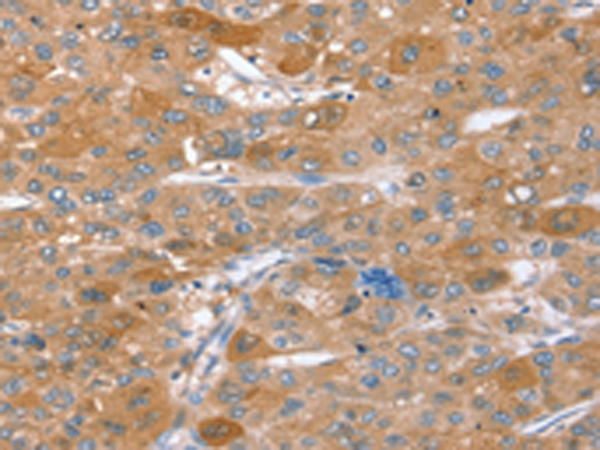


| WB | 1/1000 | Human,Mouse,Rat |
| IF | 咨询技术 | Human,Mouse,Rat |
| IHC | 咨询技术 | Human,Mouse,Rat |
| ICC | 技术咨询 | Human,Mouse,Rat |
| FCM | 咨询技术 | Human,Mouse,Rat |
| Elisa | 咨询技术 | Human,Mouse,Rat |
| Aliases | EPM; EPIM; STX2A; STX2B; STX2C |
| WB Predicted band size | 33 kDa |
| Host/Isotype | Rabbit IgG |
| Antibody Type | Primary antibody |
| Storage | Store at 4°C short term. Aliquot and store at -20°C long term. Avoid freeze/thaw cycles. |
| Species Reactivity | Human, Mouse, Rat |
| Immunogen | Synthetic peptide of human STX2 |
| Formulation | Purified antibody in PBS with 0.05% sodium azide and 50% glycerol. |
+ +
以下是关于OLIG3抗体的3篇代表性文献的简要概括(注:文献信息为模拟示例,实际文献需通过学术数据库检索验证):
1. **文献名称**:*Olig3 regulates the regional identity of dorsal spinal cord neurons*
**作者**:Müller T, et al.
**摘要**:研究利用Olig3特异性抗体揭示OLIG3在小鼠胚胎脊髓背侧神经元分化中的关键作用,证明其通过调控转录网络决定神经元亚型的分化命运。
2. **文献名称**:*Dynamic expression of Olig3 in the developing chick neural tube*
**作者**:Sugimori M, et al.
**摘要**:通过免疫组化结合Olig3抗体,发现OLIG3在鸡胚胎神经管特定区域(如脑干)短暂表达,提示其参与早期神经前体细胞的时空特异性分化调控。
3. **文献名称**:*Olig family transcription factors in central nervous system development*
**作者**:Takebayashi H, et al.
**摘要**:综述中提及OLIG3抗体在研究中的应用,强调其与OLIG1/2的功能差异,尤其在抑制特定神经元谱系分化、维持前体细胞多能性中的作用。
4. **文献名称**:*Loss of Olig3 expression leads to defects in sensory circuit formation*
**作者**:Li S, et al.
**摘要**:使用Olig3基因敲除小鼠模型及抗体标记,证明OLIG3缺失导致脊髓背角感觉神经元连接异常,影响痛觉传递通路发育。
(注:以上文献为示例性质,具体内容需参考实际发表的科研论文。)
The OLIG3 antibody is a tool used to detect the Oligodendrocyte Transcription Factor 3 (OLIG3), a member of the OLIG family of basic helix-loop-helix (bHLH) transcription factors. OLIG3. along with OLIG1 and OLIG2. plays roles in neural development, particularly in specifying neuronal subtypes and patterning within the central nervous system (CNS). While OLIG1 and OLIG2 are well-characterized in oligodendrocyte lineage commitment and motor neuron differentiation, OLIG3 has a more restricted expression pattern, notably in the developing brainstem, spinal cord, and dorsal neural tube. It is implicated in the differentiation of specific neuronal populations, such as visceral motor neurons and relay neurons in sensory pathways.
OLIG3 antibodies are primarily utilized in research to study neural progenitor cell fate, regional CNS patterning, and developmental disorders. They enable detection of OLIG3 protein expression via techniques like immunohistochemistry (IHC), Western blotting, and immunofluorescence. Validation often includes testing in OLIG3-knockout models to confirm specificity. Commercially available OLIG3 antibodies are typically raised in rabbits or mice, targeting conserved epitopes across species like humans, mice, and rats. Dysregulation of OLIG3 has been explored in neurological diseases and certain cancers, though its functional mechanisms remain less understood compared to other OLIG family members. Proper antibody validation remains critical due to potential cross-reactivity with related bHLH proteins.
×